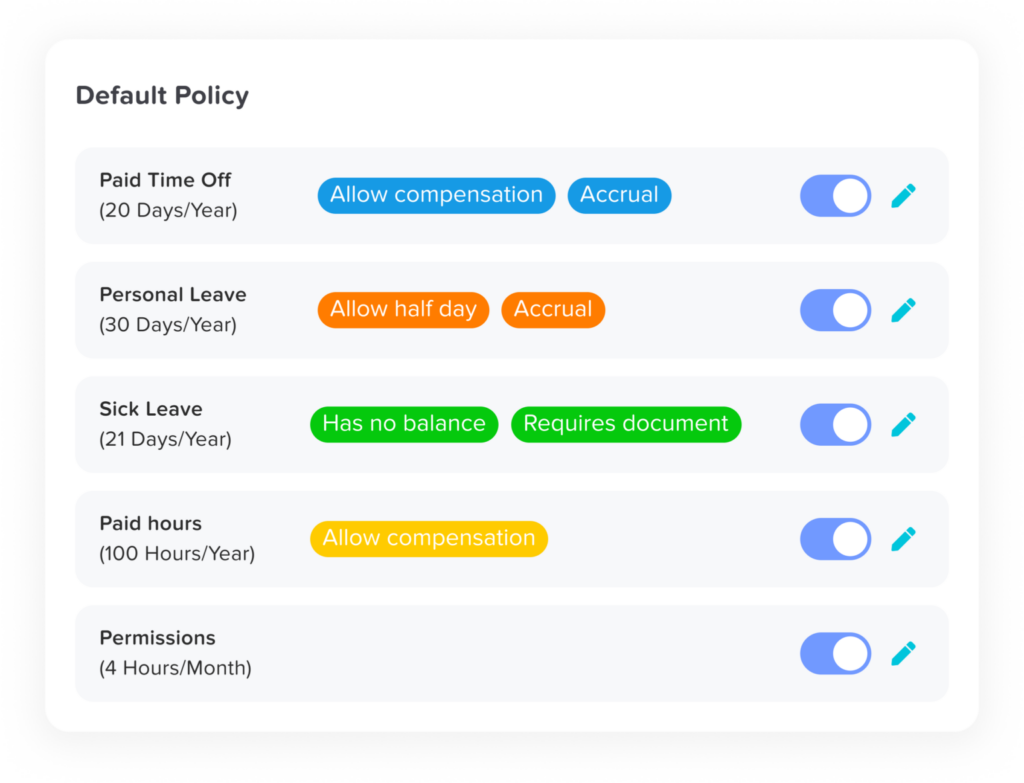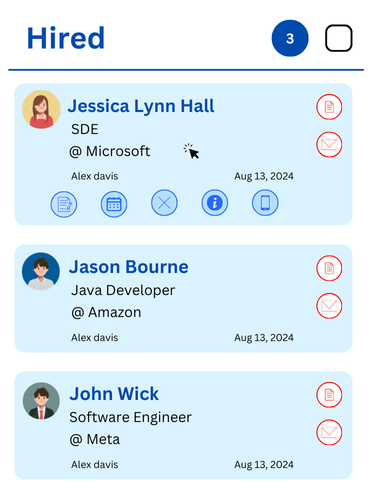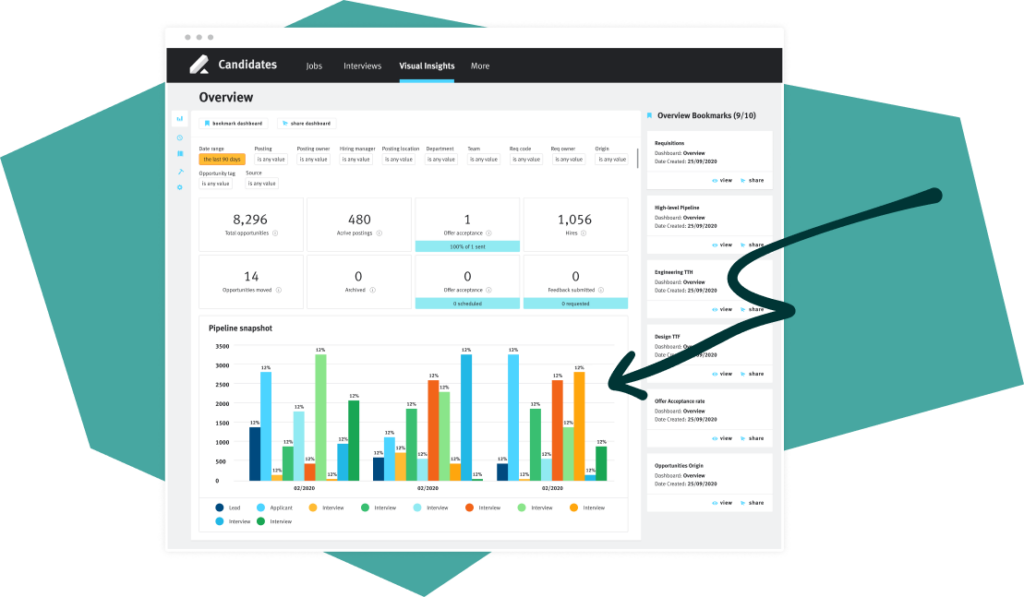Managing leaves of absence is a fundamental aspect of human resource (HR) operations. Employees require time off for various reasons, including health concerns, personal obligations, family matters, and professional development. At the same time, organizations must ensure business continuity, legal compliance, and employee satisfaction. An effective leave of absence management system helps balance these needs by providing employees with necessary time off while maintaining operational efficiency. A well-structured approach prevents staffing shortages, enhances transparency, and fosters a positive work culture.
This detailed guide will explore all aspects of leave of absence management, including its importance, the different types of leaves, legal considerations, challenges, best practices, and how modern leave management software—such as Day Off—can help streamline the process.
1. Understanding Leave of Absence Management
Leave of absence management refers to the structured system through which companies track, approve, and oversee employee time off. This system includes defining policies, monitoring absenteeism, handling compliance issues, and ensuring that employee absences do not negatively impact productivity.
Why Effective Leave Management is Important
Many organizations underestimate the significance of a well-managed leave of absence management. However, a poorly handled leave structure can result in:
- Decreased Employee Morale: If employees struggle to take time off when needed, they may feel undervalued or overworked.
- Operational Disruptions: Frequent or unplanned absences without a proper tracking system can cause workflow inefficiencies.
- Legal Non-Compliance: Labor laws mandate specific leave entitlements and failure to comply can lead to legal penalties.
- Burnout and Reduced Productivity: Employees who do not receive adequate rest or personal time may experience burnout, which can decrease their efficiency.
By implementing an organized leave management system, businesses create a structured and fair approach that benefits both employees and the organization as a whole.
2. Different Types of Leaves of Absence

Organizations must establish policies that cover various types of employee leave. Below are some of the most common types:
a. Paid Leave
Paid leave allows employees to take time off while still receiving their salary. It is a critical part of employee benefits and varies from company to company.
- Vacation Leave: Employees use this leave for personal travel, relaxation, or leisure. Organizations typically offer a fixed number of vacation days annually. Some companies allow employees to accumulate vacation days, while others operate on a “use-it-or-lose-it” basis.
- Paid Time Off (PTO): A flexible leave policy that combines vacation, sick leave, and personal leave into a single pool, allowing employees to use it as needed.
- Sick Leave: Employees use this leave when they are ill or recovering from medical treatment. Some companies require medical documentation for extended sick leaves.
- Parental Leave: This includes maternity leave, paternity leave, and adoption leave, allowing new parents to spend time with their children. Some countries mandate paid parental leave, while others offer it as an additional benefit.
b. Unpaid Leave
Unpaid leave is when an employee takes time off without receiving their salary. It is often used when an employee has exhausted their paid leave entitlement but still needs time off.
- Extended Personal Leave: This allows employees to take additional time off for personal reasons, such as caring for a family member or dealing with unforeseen circumstances.
- Leave Without Pay (LWOP): Some employees request LWOP when they need time off but have no remaining leave balance. Approval depends on company policies and business needs.
- Sabbatical Leave: A long-term leave, usually unpaid, for professional development, academic research, or personal growth. Some companies offer paid sabbaticals to long-tenured employees.
c. Medical Leave
Medical leave is granted when an employee needs extended time off due to a health condition. This includes:
- Family and Medical Leave Act (FMLA) Leave (U.S.): This provides up to 12 weeks of unpaid, job-protected leave for medical or family-related reasons.
- Disability Leave: For employees recovering from injuries, surgeries, or long-term illnesses. Some companies provide disability benefits to compensate employees during their leave.
d. Bereavement Leave
Organizations grant bereavement leave when an employee loses a loved one. The duration varies, but it typically ranges from a few days to a week, depending on company policies and cultural practices.
e. Military Leave
Employees who serve in the armed forces may require time off for training, deployment, or emergency service. Many countries have legal protections ensuring job security during military leave.
f. Jury Duty Leave
Employees may need leave to fulfill their civic duty as jurors. Many countries mandate that employers grant jury duty leave, and some even require companies to continue paying employees during this time.
3. Legal and Compliance Considerations
Laws governing employee leave vary by country and industry. Organizations must ensure that their leave policies comply with applicable labor laws.
Key Compliance Factors
Employment Laws
-
- The U.S. enforces the FMLA, providing job-protected unpaid leave.
- The UK’s employment laws mandate a minimum of 28 paid holiday days annually.
- European Union regulations ensure workers receive paid sick leave and vacation days.
Equal Treatment and Non-Discrimination
-
- Employers must ensure that leave policies are applied fairly to all employees, avoiding favoritism or discrimination based on gender, disability, or other factors.
Confidentiality and Privacy
-
- Employees’ medical leave and personal leave requests must be handled with discretion, ensuring compliance with data protection laws such as GDPR (Europe) or HIPAA (U.S.).
Job Security Obligations
-
- Many countries require that employees returning from certain types of leave (e.g., medical or parental leave) be reinstated to their previous position or a similar one.
4. Best Practices for Leave Management
To ensure a smooth leave of absence management process, organizations should adopt best practices that promote fairness, transparency, compliance, and efficiency. The following strategies help create a balanced system that meets both employee needs and business requirements.
a. Establish Clear and Transparent Leave Policies
A well-defined leave policy is the foundation of effective leave management. Employees should have access to a comprehensive leave policy document that outlines:
- Types of leave available (e.g., vacation, sick leave, parental leave, unpaid leave).
- Eligibility criteria for each type of leave.
- Application and approval procedures, including notice periods and required documentation.
- Leave accrual and carryover rules, ensuring employees understand how their leave balances are calculated.
A transparent leave policy prevents confusion and ensures fairness by setting clear expectations. When employees understand the process, they are less likely to feel frustrated, and managers can handle requests consistently, minimizing disputes and misunderstandings.
b. Utilize Leave Management Software for Automation
Manual leave tracking through spreadsheets or paper-based systems can be inefficient, error-prone, and time-consuming. Instead, organizations should leverage modern leave management software like Day Off to streamline the entire process.
Key Benefits of Leave Management Software:
- Easy Leave Requests – Employees can apply for leave through an intuitive digital platform instead of submitting paper forms or sending emails.
- Automated Approvals – Managers receive instant notifications and can approve or decline requests with just one click, reducing response time.
- Accurate Tracking & Real-Time Data – The system maintains an up-to-date record of leave balances, preventing overuse or discrepancies.
- Custom Leave Policies – HR teams can configure the system to align with company-specific leave policies, ensuring compliance.
- Seamless Integration – Many leave management tools integrate with payroll, attendance, and workforce management systems to ensure smooth operations.
- Reports & Analytics – The software provides insights into leave trends, absenteeism patterns, and workforce availability.
By automating leave tracking, companies eliminate administrative burdens, reduce errors, and improve overall efficiency.
c. Implement a Fair and Consistent Approval Process
An unbiased and structured leave approval process is critical for fostering trust and fairness within an organization. Employees should feel confident that their leave requests are evaluated objectively, without favoritism or unnecessary delays.
Key Principles for a Fair Approval Process:
- Standardized Evaluation Criteria – All leave requests should be assessed based on the same set of rules, ensuring that no employee is given preferential treatment.
- Clear Communication – If a leave request is denied, the employee should receive a valid explanation along with alternative options if applicable.
- Balanced Workload Distribution – Managers should ensure that granting leave does not negatively impact the rest of the team. They should plan for adequate staffing coverage before approving leave.
- Advance Planning – Employees should be encouraged to request leave well in advance whenever possible, allowing time for proper scheduling adjustments.
- Transparency in Decision-Making – The leave approval workflow should be documented and visible to employees, so they understand how decisions are made.
Using leave management software like Day Off can help managers handle approvals more efficiently by providing visibility into team availability and preventing overlapping leaves.
d. Promote Work-Life Balance to Boost Employee Well-Being
A strong leave policy should support employees in maintaining a healthy work-life balance. Organizations that encourage employees to take their allocated leave contribute to higher job satisfaction, reduced stress, and increased productivity.
How to Encourage Work-Life Balance Through Leave Policies:
- Promote a Culture That Supports Taking Leave – Some employees hesitate to use their leave because they fear it may be seen as a lack of commitment. Employers should actively encourage employees to take time off when needed.
- Ensure Workload Coverage – Employees should not feel burdened with unfinished work when they return from leave. Proper delegation and planning can ensure smooth transitions.
- Introduce Flexible Leave Options – Offering flexible PTO policies, half-day leave options, or remote work alternatives can provide employees with greater flexibility in managing personal responsibilities.
- Recognize the Importance of Mental Health – Companies should promote awareness about the benefits of leave, including how time off contributes to mental well-being and long-term job performance.
- Monitor Employee Leave Usage – HR should track whether employees are using their entitled leave days. If employees are consistently not taking time off, it may indicate an overburdened or toxic work culture.
A company that prioritizes work-life balance not only improves employee retention and engagement but also enhances overall workplace morale.
e. Implement Cross-Training to Prevent Work Disruptions
One of the biggest challenges in leave management is ensuring that an employee’s absence does not disrupt daily operations. Cross-training employees in multiple roles helps organizations maintain continuity even when key team members are on leave.
Benefits of Cross-Training Employees:
- Prevents Workflow Bottlenecks – Work does not come to a halt when a particular employee is on leave, as others are trained to step in when needed.
- Reduces Dependency on Key Employees – If only one person knows how to handle a critical task, their absence can create significant issues. Cross-training minimizes such risks.
- Boosts Employee Development – Employees who are trained in multiple roles gain new skills, making them more versatile and valuable to the company.
- Enhances Team Collaboration – Cross-training fosters teamwork and collaboration, as employees understand each other’s roles and responsibilities better.
- Improves Emergency Preparedness – In cases of sudden, unplanned leave, cross-trained employees can fill in without major disruptions.
How to Implement Cross-Training Effectively:
- Identify critical tasks and ensure multiple team members are trained to handle them.
- Rotate employees across different roles periodically to increase their exposure to various functions.
- Document standard operating procedures (SOPs) to help cross-trained employees quickly adapt to new roles when needed.
- Use leave management software like Day Off to monitor absences and proactively assign backup staff when someone is on leave.
By integrating cross-training into workforce planning, companies can ensure smooth business operations and minimize the negative impact of employee absences.
5. Challenges in Leave Management
While having a structured leave management system is essential, organizations often face challenges that can disrupt workflow, impact employee morale, and create administrative burdens. Below are some of the most common challenges in leave management and how companies can effectively address them.
a. Excessive Absenteeism: The Impact of Frequent and Unplanned Leaves
What is the Issue?
Excessive absenteeism occurs when employees take frequent, unplanned leaves, leading to understaffing and operational inefficiencies. While occasional absences are normal, a high rate of absenteeism can indicate deeper issues such as workplace dissatisfaction, health concerns, or lack of engagement.
Why It’s a Problem:
- Disrupts Workflow: If key employees are frequently absent, project deadlines may be missed, and service quality may decline.
- Increases Workload on Others: When one employee is absent, their workload often falls on their colleagues, leading to stress and burnout.
- Reduces Productivity: Unplanned absences can slow down business operations, especially in teams that rely on collaboration.
- Leads to Higher Turnover: If employees feel overburdened due to frequent absenteeism in their teams, they may consider leaving the organization.
How to Address It:
- Monitor Absence Trends: Use leave management software like Day Off to track patterns of absenteeism and identify employees who frequently take unplanned leave.
- Encourage Transparent Communication: Employees should feel comfortable discussing personal issues that may be affecting their attendance.
- Implement Flexible Work Options: If absenteeism is linked to work-life balance issues, consider offering flexible work arrangements, remote work options, or wellness programs.
- Introduce Incentives for Good Attendance: Recognizing and rewarding employees with consistent attendance can encourage responsible leave-taking.
- Address Underlying Workplace Issues: If absenteeism is linked to stress, workplace culture, or leadership problems, HR should take proactive steps to improve working conditions.
By understanding the root causes of absenteeism, organizations can implement strategies to minimize its impact and create a more balanced work environment.
b. Policy Abuse: Preventing the Misuse of Leave Benefits
What is the Issue?
While companies provide leave benefits to support employee well-being, some employees may take advantage of these policies by:
- Taking leave when they are not genuinely sick or in need.
- Repeatedly calling in sick on Mondays or Fridays (patterned absenteeism).
- Using leave entitlements irresponsibly, affecting productivity and team collaboration.
Why It’s a Problem:
- Creates an Unfair Work Environment: When some employees misuse leave policies, it places an unfair burden on their colleagues who follow the rules.
- Leads to Increased Costs: Companies may need to hire temporary staff or pay overtime to cover for absent employees.
- Reduces Trust in the System: If leave abuse is common, organizations may tighten leave policies in a way that negatively affects employees who genuinely need time off.
How to Address It:
- Implement a Robust Leave Tracking System: With Day Off, HR can monitor leave usage and detect suspicious patterns in absenteeism.
- Require Proper Documentation for Certain Leaves: For extended sick leave, companies can request medical certificates to ensure legitimacy.
- Conduct Regular Audits: Reviewing leave records periodically helps HR identify employees who may be misusing leave benefits.
- Educate Employees About Responsible Leave Usage: Many employees may not fully understand the impact of frequent absenteeism. Conducting awareness programs can promote fair leave usage.
- Set Clear Consequences for Leave Policy Violations: If an employee is found misusing leave policies repeatedly, HR should have a disciplinary procedure in place to address the issue.
By striking a balance between employee rights and policy enforcement, companies can prevent leave abuse while maintaining a fair and supportive work culture.
c. Managerial Resistance: Overcoming Hesitation to Approve Leave Requests
What is the Issue?
In many workplaces, managers hesitate to approve leave requests due to concerns about workload distribution, team availability, and meeting deadlines. Some managers may have an unspoken bias that employees taking leave affects productivity negatively, making them reluctant to grant time off.
Why It’s a Problem:
- Creates Employee Dissatisfaction: If employees feel they can’t take leave without facing resistance, they may become disengaged and unhappy.
- Increases Burnout and Stress: Employees who are unable to take time off when needed may experience stress, reduced motivation, and lower performance.
- Reduces Employee Retention: Employees who consistently struggle to get leave approved may eventually look for jobs with better work-life balance.
- Promotes an Unhealthy Work Culture: A workplace where employees feel guilty about taking leave leads to burnout, mental health issues, and long-term disengagement.
How to Address It:
- Educate Managers on the Importance of Leave: Companies should train managers to understand that time off is essential for employee well-being and long-term productivity.
- Use Workforce Planning Tools: Day Off helps managers plan ahead by showing who is on leave, making it easier to balance workload distribution.
- Encourage Delegation and Cross-Training: When employees are trained in multiple roles, managers are more likely to approve leave since they know others can fill in if needed.
- Set a Positive Example from Leadership: If company leaders take time off and promote a healthy work-life balance, managers are more likely to support employee leave requests.
- Make the Leave Approval Process Transparent: Employees should know the exact process for requesting leave and what criteria managers use when approving or rejecting requests.
By training managers to see leave as an essential part of employee engagement—rather than an inconvenience—organizations can create a supportive work culture where employees feel comfortable taking time off.
Final Thoughts
Addressing these leave management challenges requires a combination of clear policies, proper monitoring, and a positive workplace culture. Excessive absenteeism, policy abuse, and managerial resistance can all be mitigated by using data-driven leave tracking systems like Day Off, promoting work-life balance, and ensuring fair policy enforcement.
By overcoming these challenges, organizations can improve productivity, enhance employee satisfaction, and create a more structured and transparent leave of absence management system.












